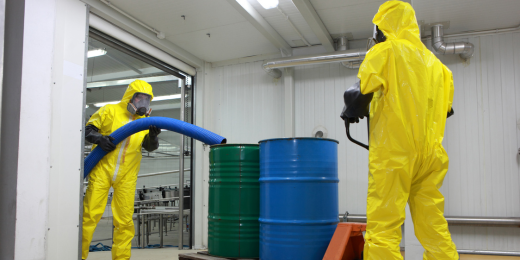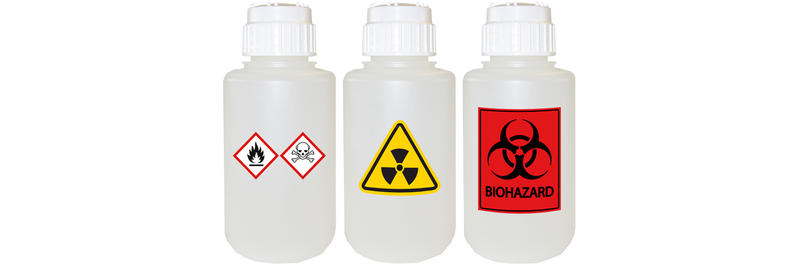The Basic Principles Of Reclaim Waste
The Basic Principles Of Reclaim Waste
Blog Article
The Main Principles Of Reclaim Waste
Table of ContentsWhat Does Reclaim Waste Do?All About Reclaim WasteReclaim Waste - QuestionsNot known Incorrect Statements About Reclaim Waste The Only Guide to Reclaim Waste
Residential sewer waste refers to the waste and items from a household septic storage tank. The appropriate management and disposal of residential sewer waste need fluid waste to be transferred to a sewage therapy plant where the proper techniques and tools are applied to cleanse and dispose of waste.
Business waste often consists of possible hazards, such as flammable materials or a blend of fluid and strong waste products, and requires a much more sophisticated and in-depth disposal process. The disposal of industrial waste normally entails the filtration of waste before transport to guarantee risk-free and appropriate disposal. Hazardous waste is created from by-products and overflow of commercial procedures and manufacturing.
This type of waste can not use the very same sewer management transportation or procedures as septic or commercial liquids. The hazardous waste management process requires the evaluation and screening of liquid waste before it goes through the disposal process (liquid waste removal melbourne). Runoff waste is the liquid waste that comes from runoff and excess stormwater in very populated areas or cities
Overflow waste can create contamination and flooding if not dealt with properly. Ensuring correct waste monitoring can avoid calamities and decrease ecological damage.
Reclaim Waste - Questions
Contact PROS Services today to find out about our waste administration and disposal services and the appropriate means to take care of the fluid waste you produce.
(https://penzu.com/p/1f225eb6893bd9aa)This supposed 'wastewater' is not only an essential source but, after treatment, will certainly be released to our land, waterways or the sea. Used water from commodes, showers, baths, kitchen area sinks, washings and industrial processes is understood as wastewater.

water made use of to cool equipment or tidy plant and equipment). Stormwater, a form of wastewater, is overflow that moves from agricultural and city areas his comment is here such as roof coverings, parks, yards, roadways, paths and rain gutters right into stormwater drains pipes, after rainfall. Stormwater flows neglected straight to local creeks or rivers, ultimately getting to the ocean.
A Biased View of Reclaim Waste
In Queensland, many wastewater is dealt with at sewer treatment plants. Wastewater is carried from residential or commercial websites via a system of sewage systems and pump terminals, understood as sewerage reticulation, to a sewage treatment plant. City governments develop, maintain and run most sewer treatment plants. Operators are accredited under the Environmental Defense Act 1994 to discharge cured wastewater at an appropriate environmental standard right into waterways.
The Department of Natural Resources recommends city governments regarding handling, operating and keeping sewerage systems and therapy plants. In unsewered areas, neighborhood federal governments might require householders to mount individual or family sewage treatment systems to treat residential wastewater from bathrooms, kitchen areas, washrooms and laundries. The Division of Natural Resources authorizes making use of household systems when they are proven to be reliable.
In some new class, treatment of some stormwater to eliminate litter, sand and crushed rock has started using gross contaminant catches. Wastewater treatment takes place in four stages: Gets rid of solid matter.
Wastewater after that flows right into big containers where solids resolve and are eliminated as sludge. Grease and residue are skimmed from the surface area. Utilizes little living organisms referred to as micro-organisms to damage down and get rid of staying dissolved wastes and great fragments. Micro-organisms and wastes are incorporated in the sludge. Removes nitrogen and phosphorus nutrients that can create algal blossoms in our waterways and threaten marine life.
The 2-Minute Rule for Reclaim Waste
Nutrient elimination is not available whatsoever sewage treatment plants since it requires costly specialist devices. It is ending up being much more typical in Queensland. Clear liquid effluent created after treatment might still include disease-causing micro-organisms. If this effluent is released right into rivers such as rivers or the sea, the micro-organisms will ultimately die out.

Many wastewater streams into the sewage system. Under the Act, neighborhood governments provide authorizations and licences for environmentally pertinent activities (Ages) including wastewater releases that could have a regional impact.
The smart Trick of Reclaim Waste That Nobody is Discussing
Tracking offers accurate info concerning water top quality and can validate that permit problems are being fulfilled. The details obtained through monitoring provides the basis for making water top quality decisions.
Report this page